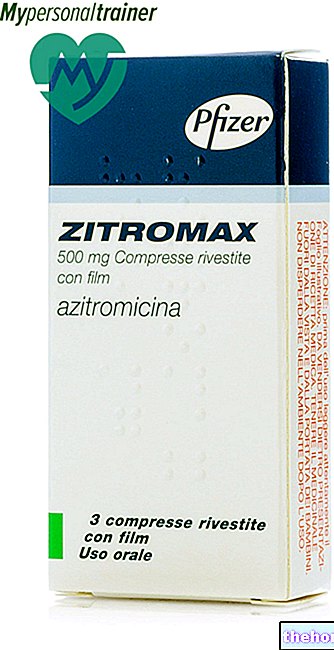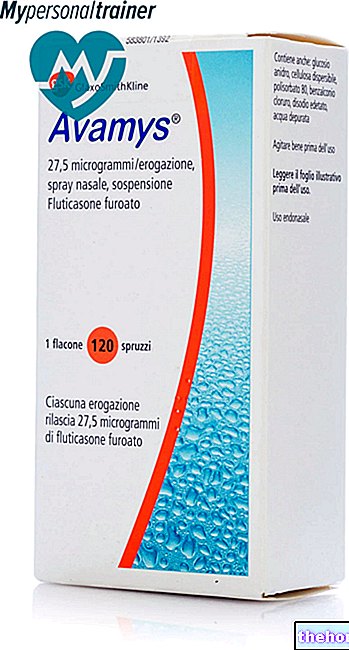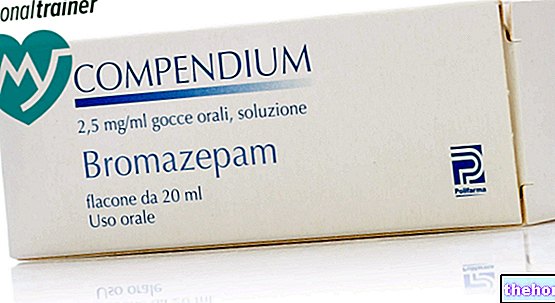Active ingredients: Calcitriol
DIFIX 0.25 micrograms soft capsule
DIFIX 0.50 micrograms soft capsule
Indications Why is Difix used? What is it for?
PHARMACOTHERAPEUTIC CATEGORY
Active Vitamin D.
THERAPEUTIC INDICATIONS
Renal osteodystrophy in patients with chronic renal failure, particularly in those undergoing hemodialysis.
Hypoparathyroidism, both idiopathic and surgical.
Pseudohypoparathyroidism.
Vitamin D-resistant hypophosphatemic rickets.
Familial pseudo-dependent vitamin D rickets.
Postmenopausal osteoporosis: the differential diagnosis should carefully exclude conditions with similar skeletal symptoms, such as multiple myeloma and tumor osteolysis, for which treatment with DIFIX is not indicated.
Contraindications When Difix should not be used
DIFIX is contraindicated:
- in patients with hypersensitivity to calcitriol (or to drugs of the same class) and to any of the excipients
- in all disorders associated with hypercalcemia
- if there is evidence of vitamin D toxicity
Precautions for use What you need to know before taking Difix
There is a close relationship between calcitriol treatment and the development of hypercalcemia.
Hypercalcemia can be triggered by a sharp rise in calcium intake resulting from dietary changes (eg increased consumption of dairy products) or the uncontrolled intake of calcium preparations.
Patients and their families should be advised to strictly adhere to the prescribed diet and they should be instructed on how to recognize the symptoms of hypercalcemia.
As soon as serum calcium levels rise to 1mg / 100ml (250μmol / L) above normal concentration (9-11mg / 100ml, or 2250-2750μmol / L), or serum creatinine increases to> 120μmol / L, treatment with DIFIX must be discontinued immediately until normal calcium concentrations are restored (see section Posology and method of administration).
Immobilized patients, such as those who have undergone surgery, are particularly exposed to the risk of hypercalcemia.
Calcitriol elevates serum levels of inorganic phosphate.
While this is desirable in patients with hypophosphataemia, caution is required in patients with renal insufficiency due to the risk of ectopic calcification.
In these cases, the plasma phosphate level should be maintained at a normal concentration (2-5mg / 100ml or 0.65-1.62mmol / l) by oral administration of appropriate phosphate binding agents and a low phosphate diet.
The result obtained by multiplying the value of calcium by that of phosphate (Ca X P) must not exceed 70 mg2 / dl2.
Patients with vitamin D resistance rickets (familial hypophosphataemia) who are treated with DIFIX should continue their oral phosphate therapy.
However, a possible stimulation of the intestinal absorption of phosphate must be taken into consideration, as this effect can modify the additional need for it.
Since calcitriol is the most effective available metabolite of vitamin D, no other vitamin D preparations should be prescribed during treatment with DIFIX, thus ensuring that the development of hypervitaminosis D is avoided.
If the patient switches from ergocalciferol (vitamin D2) therapy to calcitriol, it may take several months for the blood ergocalciferol concentration to return to baseline (see Overdose section).
Patients with normal renal function taking DIFIX should avoid dehydration.
Adequate fluid intake should always be maintained.
In patients with normal renal function, chronic hypercalcaemia may be associated with an increase in serum creatinine.
The fall in alkaline phosphatase values generally anticipates the onset of hypercalcemia and can therefore be a premonitory symptom of the latter.
In patients with postmenopausal osteoporosis, careful monitoring of renal function and blood calcium is essential before starting therapy and at regular intervals during treatment with DIFIX.
The safety and efficacy of DIFIX in children under 3 years of age have not yet been established, therefore its use is to be reserved, in the opinion of the physician, for cases of absolute necessity. The medicine is not contraindicated for subjects with celiac disease.
Keep this medicine out of the reach of children.
Interactions Which drugs or foods can modify the effect of Difix
"Please inform your doctor or pharmacist if you have recently taken any other medicines, even those without a prescription."
Since calcitriol is the most effective available metabolite of vitamin D, no other vitamin D preparations should be prescribed during treatment with calcitriol, thus ensuring that the development of hypervitaminosis D is avoided. patient switches from ergocalciferol (vitamin D2) to calcitriol, it may take several months for ergocalciferol blood concentration to return to baseline.
Pharmacological doses of vitamin D and its derivatives should be avoided during treatment with DIFIX to avoid possible additional effects and hypercalcaemia.
The instructions on the prescribed diet should be strictly followed, particularly with regard to calcium supplements, and the uncontrolled intake of additional calcium-containing preparations should be avoided. Concomitant treatment with a thiazide diuretic increases the risk of hypercalcaemia. The dosage of calcitriol it must be accurately determined in patients who are on digitalis therapy since hypercalcaemia in such patients can cause cardiac arrhythmias (see precautions for use section).
There is a relationship of functional antagonism between vitamin D analogues, which promote calcium absorption, and corticosteroids, which on the contrary inhibit it.
Medicines containing magnesium (such as antacids) can cause hypermagnesaemia and should therefore not be taken during DIFIX therapy by patients on chronic kidney dialysis.
Since DIFIX also has an effect on the transport of phosphate in the intestine, kidneys and bones, the dosage of phosphate binding agents must be adjusted according to the serum phosphate concentration (normal values: 2-5 mg / 100ml, or 0.65-1.62 mmol /L).
Patients with rickets due to vitamin D resistance (familial hypophosphataemia) should continue their oral phosphate therapy. However, it is necessary to consider a possible stimulation of intestinal phosphate absorption, since this effect can modify the additional need.
The administration of enzyme inducers such as phenytoin or phenobarbital can lead to increased metabolism and therefore to reduced serum levels of calcitriol. Therefore, high doses of calcitriol may be needed if these drugs are administered concomitantly.
Substances that sequester bile acids, including cholestyramine and sevelamer can reduce the intestinal absorption of fat-soluble vitamins thereby altering the intestinal absorption of calcitriol.
Warnings It is important to know that:
Pregnancy, breastfeeding and fertility
"Ask your doctor or pharmacist for advice before taking any medicine".
Pregnancy
Supravalvular aortic stenosis occurred in rabbit fetuses with near-lethal doses of vitamin D administered to pregnant rabbits. There is no evidence to suggest that vitamin D is teratogenic in humans even at very high doses. DIFIX should only be used in pregnancy if the benefits outweigh the potential risk to the fetus. In pregnant women the product should be administered, in cases of real need, under the direct supervision of the doctor.
Feeding time
It can be assumed that exogenous calcitriol passes into breast milk. Considering the possibility of hypercalcaemia in the mother and adverse reactions of DIFIX in infants, mothers can breastfeed while taking DIFIX provided that the serum calcium levels of the mother and infant are monitored.
Effects on ability to drive and use machines
Based on the pharmacodynamic profile of the reported adverse events, it is assumed that this product is safe or that its adverse effect on the use of machines and the ability to drive is unlikely.
Important information about some of the excipients
DIFIX capsules contain sorbitol. If you have been told by your doctor that you have an intolerance to some sugars, contact your doctor before taking this medicinal product.
Dosage and method of use How to use Difix: Dosage
The optimal daily dose of DIFIX should be carefully established in each patient on the basis of the calcium values.
Renal osteodystrophy: the efficacy of the treatment is conditioned by the simultaneous intake of calcium: in adults the supplementary calcium intake should be 600-1000 mg per day.
The recommended starting dose of DIFIX is 0.25 micrograms per day; in patients with normal or only slightly reduced calcium, starting doses of 0.25 micrograms every 2 days are sufficient. If no improvement in clinical picture and biochemical parameters are observed after 2-4 weeks, the dose of DIFIX should be increased by 0.25 micrograms per day at intervals of 2-4 weeks.
During this period, the calcium level should be checked at least twice a week and, if hypercalcemia is found, the administration of DIFIX and the additional calcium should be stopped immediately until the calcium level is within normal limits.
Therapy will then be resumed with a daily dosage 0.25 mcg lower than the previous one.
The optimal daily dose of DIFIX, to be established according to the methods indicated above, is in most patients between 0.5 mcg and 1 mcg. Higher dosages may be necessary in case of concomitant administration of barbiturates or anticonvulsants.
Hypoparathyroidism and rickets: the recommended dose of DIFIX is 0.25 micrograms per day, to be administered in the morning. If no improvement in clinical and biochemical parameters is noted, the dose can be increased every 2-4 weeks. During this interval, calcium should be determined at least twice a week.
In patients with hypoparathyroidism, a malabsorption syndrome can sometimes be observed; in these cases higher doses of DIFIX may be needed.
Postmenopausal osteoporosis: It is recommended to start with the administration of 0.5 micrograms twice a day and, if calcium levels do not show significant changes, continue with this dosage.
Unlike renal osteodystrophy, it is absolutely necessary to avoid an additional supply of calcium.
During the first month of therapy, calcium should be checked at least once a week. In case of hypercalcaemia (> 11.5 mg / 100 ml), administration of DIFIX should be suspended until normocalcaemia is restored.
In the opinion of the physician, the association with calcitonin is possible (especially in the case of high turnover osteoporosis).
General information: once the optimal posology has been established, a control of blood calcium once a month is sufficient.
In the event that the serum calcium level exceeds the normal values by 1 mg per 100 ml (mg 9-11 / 100 ml) the dose of DIFIX should be considerably reduced or the treatment stopped until normal blood calcium is restored.
To favor the rapid normalization of serum calcium values, the supplemental administration of calcium provided in the treatment of renal osteodystrophy, hypoparathyroidism and rickets can also be discontinued. The amount of calcium introduced in the diet must also be limited.
In the period of hypercalcemia, it is necessary to check the serum levels of calcium and phosphorus daily. Once normal values have been restored, treatment with DIFIX can be resumed at a lower daily dose of 0.25 micrograms than the previous one.
Pediatric population
The safety and efficacy of calcitriol capsules in children have not been studied sufficiently to make dosing recommendations. Limited data are available on calcitriol capsules in pediatric patients.
Overdose What to do if you have taken too much Difix
Overdose of any form of vitamin D causes even serious manifestations.
Hypercalcemia caused by an excess dose of vitamin D or its metabolites may also require emergency therapy.
The radiographic examination of the anatomical regions of possible calcifications can be useful for an early diagnosis.
Treatment of asymptomatic hypercalcaemia: (See section on dose, method and time of administration).
Since Difix overdose can cause hypercalcemia and in some cases hypercalciuria, calcium should be dosed at least twice a week in the dosage adjustment phase. Once the optimal daily dose has been established, a monthly check of blood calcium is sufficient.
Since calcitriol is a derivative of vitamin D, the symptoms of overdose are the same as those of vitamin D. The intake of high doses of calcium and phosphate together with DIFIX can cause similar symptoms. The result obtained by multiplying the calcium value by that of phosphatemia (Ca XP) should not exceed 70mg2 / dl2 A high level of calcium in the dialysis patient can contribute to the development of hypercalcemia.
Acute symptoms of vitamin D intoxication: anorexia, headache, vomiting, constipation.
Chronic symptoms: dystrophy (weakness, weight loss), sensory disturbances, possible febrile states accompanied by thirst, polyuria, dehydration, apathy, stunted growth and urinary tract infections.
Hypercalcemia can lead to metastatic calcification of the renal cortex, myocardium, lungs and pancreas.
The following precautionary measures should be considered in the treatment of accidental overdose: immediate gastric lavage or induction of vomiting to prevent further absorption.
Liquid paraffin can be administered to facilitate faecal excretion.
Repeated measurements of serum calcium are advisable. If elevated serum calcium levels persist, phosphates and corticosteroids can be administered and measures instituted to achieve adequate diuresis.
Hypercalcaemia to high levels (> 3.2 mmol / L) can lead to renal failure, particularly if the phosphate levels in the blood are normal or elevated due to renal dysfunction.
"In case of accidental ingestion / intake of an excessive dose of DIFIX contact your doctor immediately or go to the nearest hospital".
Side Effects What are the side effects of Difix
Like all medicines, DIFIX can cause side effects, although not everybody gets them.
Clinical Studies
The adverse reactions listed below reflect the experience with calcitriol during clinical trials and the post marketing phase.
Hypercalcaemia is the most commonly reported adverse reaction. The frequencies of undesirable effects listed below are defined according to the following convention:
- Very common: affects more than 1 user in 10
- Common: affects 1 to 10 users in 100
- Uncommon: affects 1 to 10 users in 1,000
- Rare: affects 1 to 10 users in 10,000
- Very rare: affects less than 1 user in 10,000
- Not known: frequency cannot be estimated from the available data
Very common:
- Hypercalcemia
Common:
- Headache, abdominal pain, nausea, rash, urinary tract infection
Uncommon:
- Decreased appetite, vomiting, increased blood creatinine
Not known:
- Hypersensitivity, urticaria, polydipsia, dehydration, low weight, apathy, muscle weakness, sensory disturbance, constipation, upper abdominal pain, erythema, pruritus, growth retardation, polyuria, calcinosis, pyrexia, thirst
Since calcitriol exerts vitamin D activity, adverse effects may arise that are similar to those seen when taking too much vitamin D, e.g. hypercalcemic syndrome or calcium intoxication (depending on the severity and duration hypercalcemia) (see section posology, method, and frequency of administration, and section Precautions for use).
Occasional acute symptoms include decreased appetite, headache, nausea, vomiting, dry mouth, abdominal pain or upper abdominal pain, constipation, bone and muscle pain.
Due to the short biological half-life of calcitriol, pharmacokinetic studies have shown the normalization of elevated serum calcium levels within a few days of stopping treatment, ie much more rapidly than in treatments with vitamin D3 preparations.
Chronic effects may include muscle weakness, weight reduction, sensory disturbances, pyrexia, thirst, polydipsia, polyuria, dehydration, apathy, growth retardation, urinary tract infections.
In conjunction with hypercalcemia and hyperphosphatemia of> 6mg / 100ml or 1.9mmol / l, calcinosis can occur; this phenomenon can be visible radiographically.
Hypersensitivity reactions including skin rash, erythema, pruritus and urticaria may arise in predisposed individuals.
Laboratory Anomalies
In patients with normal renal function, chronic hypercalcaemia may be associated with an increase in blood creatinine.
Post Marketing
The number of adverse effects reported in clinical use of DIFIX monitored over a 15-year period for all indications is very low and any single effect, including hypercalcaemia, has an incidence rate of 0.001% or less.
Compliance with the instructions contained in the package leaflet reduces the risk of undesirable effects.
Reporting of side effects
If you get any side effects, talk to your doctor or pharmacist. This includes any possible side effects not listed in this leaflet. You can also report side effects directly through the Italian Medicines Agency, website www.agenziafarmaco.it/it/responsabili. By reporting side effects you can help provide more information on the safety of this medicine.
Expiry and Retention
Expiry: See the expiry date printed on the package.
The expiry date refers to the product in intact and correctly stored packaging.
Warning: do not use the medicine after the expiry date shown on the package.
Store at a temperature below 30 ° C
Medicines should not be disposed of via wastewater or household waste. Ask your pharmacist how to throw away medicines you no longer use. This will help protect the environment.
Keep this medicine out of the reach and sight of children.
Other information
COMPOSITION
Each 0.25 microgram capsule contains:
Active ingredient: Calcitriol 0.25 micrograms.
Excipients: butylhydroxyanisole, butylhydroxytoluene, medium chain triglycerides, gelatin, glycerol, 85% solution of sorbitol, sorbitans and mannitol, ethyl-p-oxybenzoate sodium salt (E 215), propyl-p-oxybenzoate sodium salt (E 217) , titanium dioxide (E 171).
Each 0.50 microgram capsule contains:
Active ingredient: Calcitriol 0.50 micrograms.
Excipients: butylhydroxyanisole, butylhydroxytoluene, medium chain triglycerides, gelatin, glycerol, 85% solution of sorbitol, sorbitans and mannitol, ethyl-p-oxybenzoate sodium salt (E 215), propyl-p-oxybenzoate sodium salt (E 217) , titanium dioxide (E 171), canthaxanthin 10% (E 161).
PHARMACEUTICAL FORM AND CONTENT
DIFIX 0.25 micrograms soft capsule
- Box of 30 capsules.
DIFIX 0.50 micrograms soft capsule
- Box of 30 capsules.
Source Package Leaflet: AIFA (Italian Medicines Agency). Content published in January 2016. The information present may not be up-to-date.
To have access to the most up-to-date version, it is advisable to access the AIFA (Italian Medicines Agency) website. Disclaimer and useful information.
01.0 NAME OF THE MEDICINAL PRODUCT
DIFIX SOFT CAPSULES
02.0 QUALITATIVE AND QUANTITATIVE COMPOSITION
Each 0.25 mcg capsule contains:
Active ingredient: calcitriol 0.25 mcg.
Excipients: contains sorbitol
For the "full list of excipients, see section 6.1".
Each 0.50 mcg capsule contains:
Active ingredient: calcitriol 0.50 mcg.
Excipients: contains sorbitol
For the "full list of excipients, see section 6.1".
03.0 PHARMACEUTICAL FORM
Soft capsules
04.0 CLINICAL INFORMATION
04.1 Therapeutic indications
Renal osteodystrophy in patients with chronic renal failure, particularly in those undergoing hemodialysis.
Hypoparathyroidism, both idiopathic and surgical.
Pseudohypoparathyroidism.
Vitamin D-resistant hypophosphatemic rickets.
Familial pseudo-dependent vitamin D rickets.
Postmenopausal osteoporosis: the differential diagnosis should carefully exclude conditions with similar skeletal symptoms, such as multiple myeloma and tumor osteolysis, for which treatment with DIFIX is not indicated.
04.2 Posology and method of administration
The optimal daily dose of DIFIX should be carefully established in each patient on the basis of the calcium values.
Renal osteodystrophy: the efficacy of the treatment is conditioned by the simultaneous intake of calcium: in adults the supplementary calcium intake should be 600-1000 mg per day.
The recommended starting dose of DIFIX is 0.25 mcg per day; in patients with normal or only slightly reduced calcium, starting doses of 0.25 mcg every 2 days are sufficient. clinical picture and biochemical parameters, the dose of DIFIX should be increased by 0.25 micrograms per day at intervals of 2-4 weeks. During this period, calcium should be checked at least twice a week and, if hypercalcaemia is found, administration of DIFIX and the additional calcium must be immediately suspended until "the calcium level returns to normal limits.
Therapy will then be resumed with a daily dosage 0.25 mcg lower than the previous one.
The optimal daily dose of DIFIX, to be established according to the methods indicated above, is "in most patients between 0.5 mcg and 1 mcg. Higher doses" may be necessary in case of concomitant administration of barbiturates or anticonvulsants.
Hypoparathyroidism and rickets: the recommended dose of DIFIX is 0.25 micrograms per day, to be administered in the morning. If no improvement in clinical and biochemical parameters is noted, the dose can be increased every 2-4 weeks. During this interval, calcium should be determined at least twice a week.
In patients with hypoparathyroidism, a malabsorption syndrome may sometimes be observed, in which cases higher doses of DIFIX may be required.
Postmenopausal osteoporosis: It is recommended to start with the administration of 0.5 micrograms twice daily and, if calcium levels do not show significant changes, continue with this dosage.
Unlike "renal osteodystrophy," an additional calcium intake should be avoided.
During the first month of therapy, calcium should be checked at least once a week. In case of hypercalcaemia (> 11.5 mg / 100 ml), administration of DIFIX should be suspended until normocalcaemia is restored.
In the opinion of the physician, the association with calcitonin is "possible" (especially in the case of high turnover osteoporosis).
General information: once the optimal dosage has been established, a control of calcium once a month is sufficient.
In the event that the serum calcium level exceeds the normal values by 1 mg per 100 ml (mg 9/11/100 ml) the dose of DIFIX should be considerably reduced or the treatment stopped until normal blood calcium is restored.
To favor the rapid normalization of serum calcium values, it is also possible to discontinue the supplementary administration of calcium provided for the treatment of renal osteodystrophy, hypoparathyroidism and rickets. The quantity of calcium introduced in the diet must be limited.
In the period of hypercalcemia, it is necessary to check the serum levels of calcium and phosphorus on a daily basis. Once the normal values have been restored, treatment with DIFIX can be resumed with a daily dose lower than 0.25 mcg compared to that previous.
Pediatric population
The safety and efficacy of calcitriol capsules in children have not been studied sufficiently to make dosing recommendations. Limited data are available on calcitriol capsules in pediatric patients.
04.3 Contraindications
DIFIX is contraindicated:
• in patients with known hypersensitivity to calcitriol (or to drugs of the same class) and to any of the excipients
• in all disorders associated with hypercalcemia
• if there is evidence of vitamin D toxicity
04.4 Special warnings and appropriate precautions for use
There is a close relationship between calcitriol treatment and the development of hypercalcemia.
Hypercalcemia can be triggered by a sharp rise in calcium intake resulting from dietary changes (eg increased consumption of dairy products) or the uncontrolled intake of calcium preparations.
Patients and their families should be advised to strictly adhere to the prescribed diet and they should be instructed on how to recognize the symptoms of hypercalcemia. As soon as serum calcium levels rise to 1mg / 100ml (250mcmol / L) above normal concentration (9-11mg / 100ml, or 2250-2750mcmol / L), or serum creatinine increases to> 120mcmol / l, treatment with DIFIX should be stopped immediately until normal calcium concentrations are restored (see section 4.2 Posology and method of administration).
Immobilized patients, such as those who have undergone surgery, are particularly exposed to the risk of hypercalcemia.
Calcitriol elevates serum levels of inorganic phosphate.
While this is desirable in patients with hypophosphataemia, caution is required in patients with renal insufficiency due to the risk of ectopic calcification.
In these cases, the plasma phosphate level should be maintained at a normal concentration (2-5mg / 100ml or 0.65-1.62mmol / l) by oral administration of appropriate phosphate binding agents and a low phosphate diet.
The result obtained by multiplying the value of calcium by that of phosphatemia (Ca X P) must not exceed 70 mg2 / dl2.
Patients with vitamin D resistance rickets (familial hypophosphataemia) who are treated with DIFIX should continue their oral phosphate therapy.
However, it is necessary to consider a possible stimulation of intestinal phosphate absorption, since this effect can modify the additional need.
Since calcitriol is the most effective available metabolite of vitamin D, no other vitamin D preparations should be prescribed during treatment with DIFIX, thus ensuring that the development of hypervitaminosis D is avoided.
If the patient switches from ergocalciferol (vitamin D2) therapy to calcitriol, it may take several months for the blood ergocalciferol concentration to return to baseline (see section 4.9 Overdose).
Patients with normal renal function taking DIFIX should avoid dehydration.
Adequate fluid intake should always be maintained.
In patients with normal renal function, chronic hypercalcaemia may be associated with an increase in serum creatinine.
The fall in alkaline phosphatase values generally anticipates the onset of hypercalcemia and can therefore be a premonitory symptom of the latter.
In patients with postmenopausal osteoporosis, careful monitoring of renal function and blood calcium is essential before starting therapy and at regular intervals during treatment with DIFIX.
The safety and efficacy of DIFIX in children under 3 years of age have not yet been established, therefore its use is to be reserved, in the opinion of the physician, for cases of absolute necessity.
DIFIX capsules contain sorbitol. Patients with rare hereditary problems of fructose intolerance should not take this medicine.
04.5 Interactions with other medicinal products and other forms of interaction
Since calcitriol is the most effective available metabolite of vitamin D, no other vitamin D preparations should be prescribed during treatment with calcitriol, thus ensuring that the development of hypervitaminosis D is avoided. patient switches from ergocalciferol (vitamin D2) therapy to calcitriol, it may take several months for the blood concentration of ergocalciferol to return to baseline.
Pharmacological doses of vitamin D and its derivatives should be avoided during treatment with DIFIX to avoid possible additional effects and hypercalcaemia.
The instructions on the prescribed dietary regimen must be strictly followed, with particular regard to calcium supplements, and the uncontrolled intake of additional calcium-containing preparations should be avoided.
Concomitant treatment with a thiazide diuretic increases the risk of hypercalcaemia. Calcitriol dosage should be accurately determined in patients under digitalis therapy as hypercalcaemia in such patients may cause cardiac arrhythmias (see section 4.4 Special warnings and precautions for use).
There is a relationship of functional antagonism between vitamin D analogues, which promote calcium absorption, and corticosteroids, which on the contrary inhibit it.
Medicines containing magnesium (such as antacids) can cause hypermagnesaemia and should therefore not be taken during therapy with DIFIX by patients on chronic kidney dialysis.
Since DIFIX also has an effect on the transport of phosphate in the intestine, kidneys and bones, the dosage of phosphate binding agents must be adjusted according to the serum phosphate concentration (normal values: 2-5 mg / 100 ml, or 0.65-1.62 mmol / l).
Patients with rickets due to vitamin D resistance (familial hypophosphataemia) should continue their oral phosphate therapy. However, a possible stimulation of the intestinal absorption of phosphate must be taken into consideration, as this effect can modify the additional need for it.
The administration of enzyme inducers such as phenytoin or phenobarbital can lead to increased metabolism and therefore to reduced serum levels of calcitriol. Therefore, high doses of calcitriol may be needed if these drugs are administered concomitantly.
Substances that sequester bile acids, including cholestyramine and sevelamer can reduce the intestinal absorption of fat-soluble vitamins thereby altering the intestinal absorption of calcitriol.
04.6 Pregnancy and breastfeeding
Pregnancy
Supravalvular aortic stenosis occurred in rabbit fetuses with near-lethal doses of vitamin D administered to pregnant rabbits. There is no evidence to suggest that vitamin D is teratogenic in humans even at very high doses. DIFIX should only be used in pregnancy if the benefits outweigh the potential risk to the fetus.
Feeding time
It can be assumed that exogenous calcitriol passes into breast milk. Considering the possibility of hypercalcaemia in the mother and adverse reactions of DIFIX in infants, mothers can breastfeed while taking DIFIX provided that the serum calcium levels of the mother and infant are monitored.
04.7 Effects on ability to drive and use machines
Based on the pharmacodynamic profile of the reported adverse events, it is assumed that this product is safe or that its adverse effect on these activities is unlikely.
04.8 Undesirable effects
Clinical Studies
The adverse reactions listed below reflect the experience with calcitriol during clinical trials and the post marketing phase.
Hypercalcaemia is the most commonly reported adverse reaction.
The ADRs listed in Table 1 are categorized by system organ class and frequency, defined using the following convention: Very common (≥1 / 10); common (≥1 / 100 y
Table 1: Summary of ADRs found in patients treated with Difix® (calcitriol)
Since calcitriol exerts the activity of vitamin D, adverse effects may arise that are similar to those seen when taking too much vitamin D, eg hypercalcemic syndrome or calcium intoxication (depending on the severity and duration hypercalcaemia) (see section 4.2 Posology and method of administration, and section 4.4 Special warnings and precautions for use). Occasional acute symptoms include decreased appetite, headache, nausea, vomiting, dry mouth, abdominal pain or abdominal pain upper and constipation, bone and muscle pain.
Due to the short biological half-life of calcitriol, pharmacokinetic studies have shown the normalization of elevated serum calcium levels within a few days of stopping treatment, ie much more rapidly than in treatments with vitamin D3 preparations.
Chronic effects may include muscle weakness, weight reduction, sensory disturbances, pyrexia, thirst, polydipsia, polyuria, dehydration, apathy, growth retardation, urinary tract infections.
Concurrent with hypercalcemia and hyperphosphatemia of> 6mg / 100ml or 1.9mmol / L, calcinosis may occur; this phenomenon can be visible radiographically.
Hypersensitivity reactions including skin rash, erythema, pruritus and urticaria may arise in predisposed individuals.
Laboratory Anomalies
In patients with normal renal function, chronic hypercalcaemia may be associated with an increase in blood creatinine.
Post Marketing
The number of adverse effects reported in clinical use of DIFIX monitored over a 15-year period for all indications is very low and any single effect, including hypercalcaemia, has an incidence rate of 0.001% or less.
Reporting of suspected adverse reactions
The reporting of suspected adverse reactions that occur after the authorization of the medicinal product is important, as it allows continuous monitoring of the benefit / risk ratio of the medicinal product. Healthcare professionals are asked to report any suspected adverse reactions via the Italian Medicines Agency, website web http://www.agenziafarmaco.gov.it/it/responsabili.
04.9 Overdose
Treatment of asymptomatic hypercalcaemia: (See section 4.2 Posology and method of administration).
Since Difix overdose can cause hypercalcemia and in some cases hypercalciuria, calcium should be dosed at least twice a week in the dosage adjustment phase. Once the optimal daily dose has been established, a monthly check of blood calcium is sufficient.
Since calcitriol is a derivative of vitamin D, the symptoms of overdose are the same as those of vitamin D. The intake of high doses of calcium and phosphate together with DIFIX can cause similar symptoms. The result obtained by multiplying the calcium value by that of phosphatemia (Ca XP) should not exceed 70 mg2 / dl2 A high level of calcium in the dialysis patient can contribute to the development of hypercalcemia.
Acute symptoms of vitamin D intoxication: anorexia, headache, vomiting, constipation.
Chronic symptoms: dystrophy (weakness, weight loss), sensory disturbances, possible febrile states accompanied by thirst, polyuria, dehydration, apathy, stunted growth and urinary tract infections.
Hypercalcemia can lead to metastatic calcification of the renal cortex, myocardium, lungs and pancreas.
The following precautionary measures in the treatment of accidental overdose should be considered: immediate gastric lavage or induction of vomiting to prevent further absorption.
Liquid paraffin can be administered to facilitate faecal excretion. Repeated measurements of serum calcium are advisable. If elevated serum calcium levels persist, phosphates and corticosteroids can be administered and measures instituted to achieve adequate diuresis.
Hypercalcaemia to high levels (> 3.2 mmol / L) can lead to renal failure, particularly if the phosphate levels in the blood are normal or elevated due to renal dysfunction.
Overdose of any form of vitamin D causes even serious manifestations.
Hypercalcemia caused by an excess dose of vitamin D or its metabolites may also require emergency therapy.
The radiographic examination of the anatomical regions of possible calcifications can be useful for an early diagnosis.
05.0 PHARMACOLOGICAL PROPERTIES
05.1 Pharmacodynamic properties
Pharmacotherapeutic group: Active Vitamin D.
ATC code: A11CC04
Calcitriol is one of the main active metabolites of vitamin D3 which is formed in the kidney from its precursor, 25-hydroxycholecaciferol (25-HCC).
DIFIX promotes the intestinal absorption of calcium and regulates bone mineralization. In patients with severe renal insufficiency, particularly in those who have been undergoing periodic hemodialysis for some time, the formation of endogenous calcitriol is progressively reduced and may even stop altogether: this deficiency plays a primary role in the onset of renal osteodystrophy.
In patients with renal osteodystrophy, oral administration of DIFIX.
- normalizes the intestinal absorption of calcium;
- corrects hypocalcemia;
- relieves bone and muscle pain.
Administration also favors:
- normalization or reduction of serum levels of alkaline phosphatase;
- normalization or reduction of parathyroid hormone serum levels.
In patients suffering from both idiopathic and surgical hypoparathyroidism, DIFIX corrects the hypocalcemia secondary to parathyroid hormone deficiency.
In pseudohypoparathyroidism it allows the normal intestinal absorption of calcium to be restored, to correct hypocalcemia and to reduce circulating parathyroid hormone levels.
In vitamin D-resistant hypophosphatemic rickets the administration of DIFIX leads to an improvement of the clinical picture and a normalization of circulating phosphates.
In family vitamin D-pseudo-dependent rickets, DIFIX determines the remission of bone lesions and the normalization of calcemic and phosphate values and intestinal calcium absorption.
In patients suffering from postmenopausal osteoporosis, estrogen deficiency leads to a reduced endogenous synthesis of calcitriol, with a consequent decrease in intestinal calcium absorption and bone mineralization processes.
The administration of DIFIX determines a significant increase in intestinal calcium absorption. In this way the calcium balance, negative in these patients, returns to being positive.
05.2 Pharmacokinetic properties
Studies carried out in healthy subjects, with both tritium-labeled and unlabeled calcitriol, show that drug absorption occurs rapidly after oral administration, reaching maximum levels within 3-6 hours.
The rapid absorption is confirmed by the rapid increase in calcium in the urine, which can be verified already seven hours after administration.
A dose-related biological response is evidenced in the "increased excretion of calcium in the urine with doses of 0.5 and 1.0 mcg administered twice daily. Steady-state values, achieved with doses of 0.5 mcg two times a day, they drop to baseline levels following discontinuation of the drug, with a half-life of approximately three and a half hours.
05.3 Preclinical safety data
The acute toxicity of calcitriol was evaluated in mice and rats.
After oral administration the LD50 in mice is equal to 2 mg / kg.
In the rat it is> 5 mg / kg.
Chronic toxicity of calcitriol was evaluated in rats and dogs.
Three groups of rats and dogs were administered the compound orally, for a duration of 26 weeks, at dosages of 0.02, 0.08 and 0.30 mcg / kg / day. In the groups of rats that received medium and high dosages there was reduction of body weight, decreased food intake, increase in serum calcium; these changes were absent or less marked in the group receiving the lower dosages.
Dogs given the high and medium doses presented with marked anorexia, severe weight loss, deterioration in physical condition, increased calcium, metastatic soft tissue calcification and bone changes.
In the dogs of the group receiving 0.02 mcg / kg / day these findings were attenuated.
06.0 PHARMACEUTICAL INFORMATION
06.1 Excipients
0.25 mcg capsules: butylhydroxyanisole, butylhydroxytoluene, medium chain triglycerides, gelatin, glycerol, 85% solution of sorbitol, sorbitans and mannitol, ethyl-p-oxybenzoate sodium salt (E 215), propyl-p-oxybenzoate salt sodium (E 217), titanium dioxide (E 171).
0.50 mcg capsules: butylhydroxyanisole, butylhydroxytoluene, medium chain triglycerides, gelatin, glycerol, 85% solution of sorbitol, sorbitans and mannitol, ethyl-p-oxybenzoate sodium salt (E 215), propyl-p-oxybenzoate salt sodium (E 217), titanium dioxide (E 171), canthaxanthin 10% (E 161).
06.2 Incompatibility
No specific incompatibilities are known to date.
06.3 Period of validity
3 years
06.4 Special precautions for storage
Store at a temperature below 30 ° C.
06.5 Nature of the immediate packaging and contents of the package
Internal packaging: blister packs in PA / Al / PVC-Al coupled.
External packaging: printed cardboard box.
DIFIX 0.25 mcg soft capsules
Box of 30 capsules
DIFIX 0.50 mcg soft capsules
Box of 30 capsules
06.6 Instructions for use and handling
No special instructions
07.0 MARKETING AUTHORIZATION HOLDER
PROMEDICA S.r.l. - Via Palermo 26 / A - 43100 Parma.
08.0 MARKETING AUTHORIZATION NUMBER
Difix 0.25 mcg soft capsules - 30 capsules
N ° 027231012
Difix 0.50 mcg soft capsules - 30 capsules
N ° 027231036
09.0 DATE OF FIRST AUTHORIZATION OR RENEWAL OF THE AUTHORIZATION
15/04/1996
10.0 DATE OF REVISION OF THE TEXT
October 2013




























